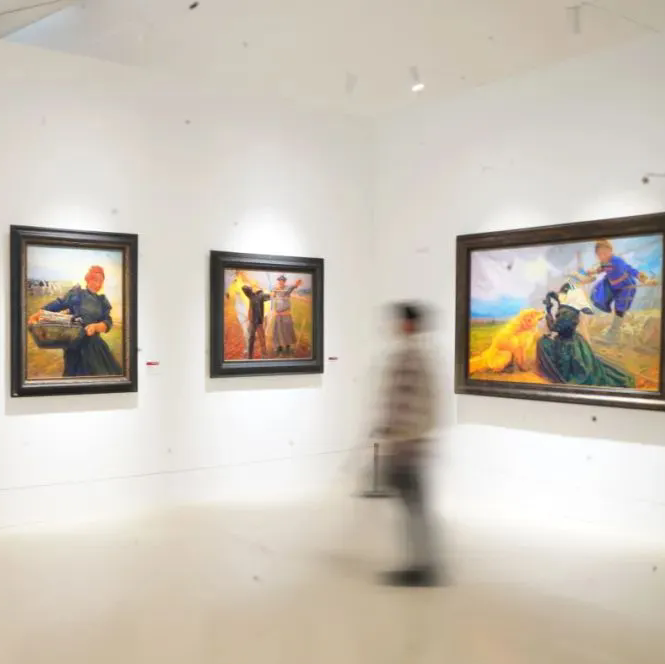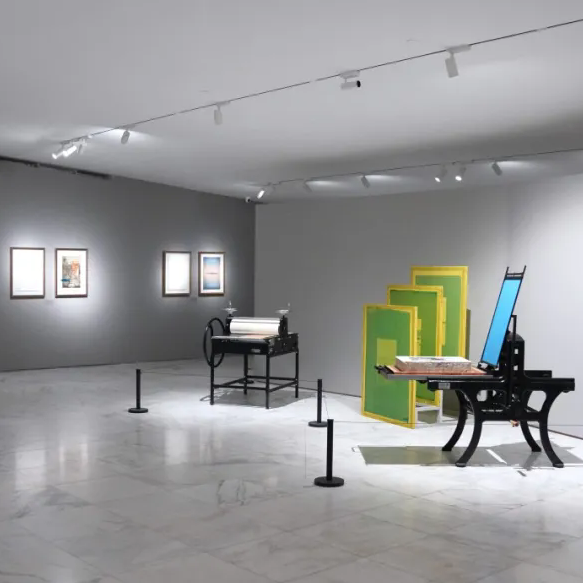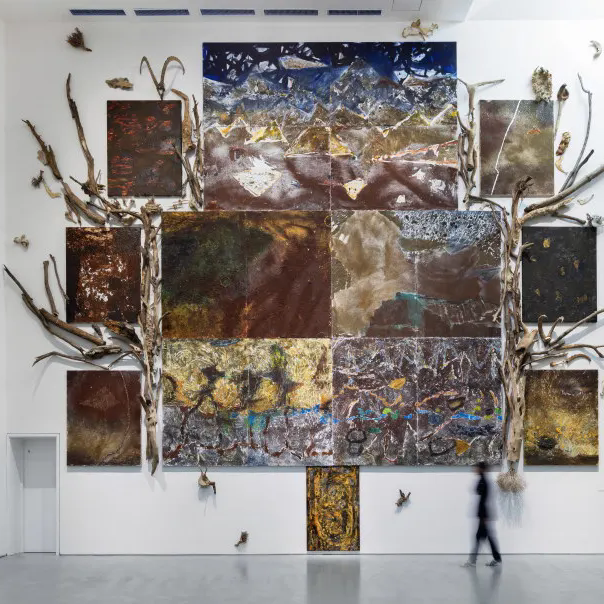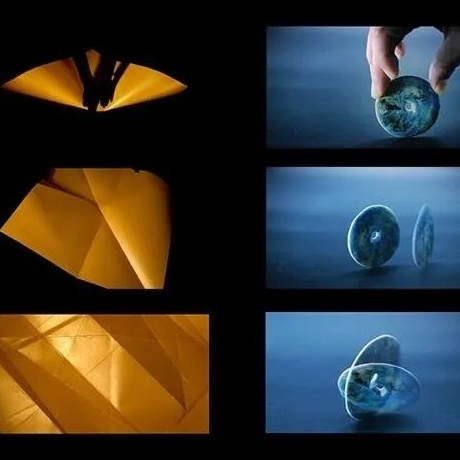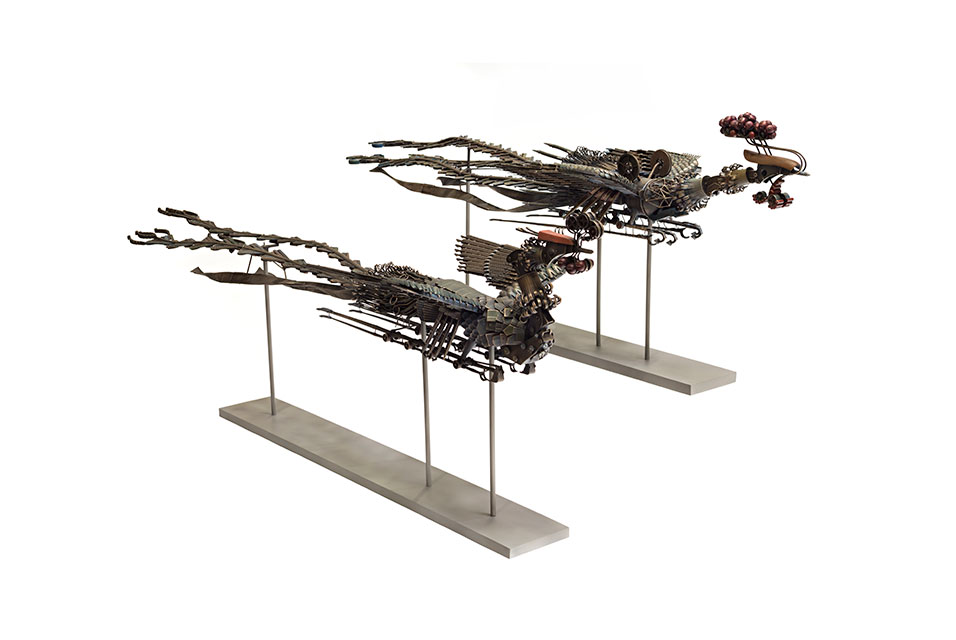
Xu Bing (b. 1955),Bronze Phoenix (Feng and Huang), 2016, Bronze with color patina, 55½ x 16 x 21¼ inches, (141 x 40.6 x 54 cm).
One of the most mythical and popular beasts of Chinese folklore has landed as the Crow Museum of Asian Art of The University of Texas at Dallas presents Phoenix Rising: Xu Bing and the Art of Resilience. The exhibition will run Nov. 3, 2022, through March 5, 2023, at the Crow Museum, located in the Dallas Arts District at 2010 Flora St., Dallas 75201. Phoenix Rising is organized by the Crow Museum of Asian Art in partnership with the international Asian Cultural Council.
The exhibition highlights a celebrated work – Bronze Phoenix 2016 (Feng and Huang) – created by Xu Bing (b. 1955 Chongqing, China), an internationally acclaimed artist, academic and innovator whose award-winning works have been showcased in the world’s top museums and art biennales. In addition to Xu’s headlining work, Phoenix Rising includes five works from the Crow Museum’s Chinese jade collection that also celebrate the revered phoenix.
“We are delighted to partner with the Asian Cultural Council to bring Xu Bing’s stunning work with its vital and relevant message to Texas,” said Amy Lewis Hofland, Senior Director of the Crow Museum of Asian Art of The University of Texas at Dallas and curator of the exhibition. “As our world moves through the pandemic, climate change, wars and the challenges we face as humans, the symbolism of the phoenix reminds us of our power of resiliency and our capacity to strive to a brighter future.”
As leader of the universe in the cosmos of birds, the phoenix is kind, gentle and compassionate, representing unity, power and rebirth. As composite animals, they are known to have the face of a swallow, the head of a pheasant, the beak of a rooster, the legs of a crane, the back of a tortoise, and the unfurling tail of a peacock.
These mythical beasts in Xu’s larger-than-life sculpture represent an important story in Chinese folklore – a story that remains relevant and important today.
Asian Cultural Council Executive Director Judy Kim says, “Asian Cultural Council’s core mission for the past 60 years has been to promote mutual respect and better understanding between Asia and the U.S. through cultural exchange, primarily by providing direct support to artists who are driven by a curiosity about the world. Today, this type of desire for mutual understanding is more important than ever. We are proud to partner with the Crow Museum and Xu Bing on an exhibition which exemplifies the kind of contemporary, relevant work and conversation that we seek to support.”
Conceived at the time of Xu’s monumental Phoenix Project (2008-2010), which was exhibited in Beijing, Shanghai, New York and at the 2015 Venice Biennale, the intricate hand-painted Bronze Phoenix 2016 (Feng and Huang) consists of 500 separate cast and hand-wrought parts. Proud and powerful, a symbol of peace and prosperity, the mythological Feng and Huang foretell great events. Xu’s Bronze Phoenix has another aspect as well. It’s made up of shovels, wrenches and drill bits – the tools of the worker – making it a contemporary phoenix and a representation of 21st century China in all its variety, ambition and raw energy.

Bronze Phoenix, Material: Bronze sculpture with colored patina, Dimension: Male (Feng): 56 ¼ x 13 ½ x 15 inch, Female (Huang): 55 ½ x 16 x 21 ¼ inch
“In Chinese folklore,” Xu explained, “there was once a big mountain with a fire burning. One large bird tried with all his might to put the fire out; however, the fire took over and burned all his feathers. Eventually, every bird from the forest came out to give one feather from their own bodies. The phoenix was born, becoming the most beautiful bird in the forest.”
Each element and resplendent color is charged with symbolism. With no blueprint to follow, Xu was given the freedom to do as he liked – to create a phoenix for his time. The intricate Bronze Phoenix sculpture was formed through the traditional lost wax process and is built from the tools of the worker: wrenches and shovels cover the wings, drill bits form extended beaks, and hard hats create a majestic crown. Industrial tubing decorates the bodies and ribbons that demarcate Chinese construction sites billow in a fanfare of trailing feathers.
“Each piece of Bronze Phoenix is hand-painted,” Xu says. “It is like a relic that was just discovered from an archaeological site: the coloration has worn, but after wiping away the dust, the colors shine again, bringing out the inner beauty of the sculpture. My special treatment of color was inspired from Degas’ sculptures; its subtlety combines perfectly with the color of the bronze itself.”
In addition to the Bronze Phoenix, the Crow Museum showcases several examples of works from the Crow Museum’s Chinese jade collection that pay tribute to the phoenix – a vase, sculpture, table screen and pendant, all from the Qing Dynasty. Within the contrast of time, materials and message, the strength of the beloved phoenix rising is present in each work, whether created in the 1800s or 200-plus years later in the 21st century.
Phoenix Rising: Xu Bing and the Art of Resilience is curated by Amy Hofland Lewis, Senior Director of the Crow Museum of Asian Art.
ABOUT THE ARTIST
Xu Bing 徐冰(b. 1955 Chongqing, China) is a contemporary artist based in Beijing and New York whose practice focuses on print, sculpture, and installation works that often bridge and blur cultural and linguistic divides.
Originally trained in printmaking, Xu earned his BA (1981) and MFA (1987) at the Central Academy of Fine Arts (CAFA) in Beijing. Soon after, he presented his breakthrough work, Book from the Sky (Tianshu) (1987-1991), in Beijing’s first contemporary art group exhibition China/Avant-Garde.
In 1990, Xu moved to the United States, further establishing himself in the international arts scene before returning to Beijing in 2008 to serve as Vice President of the Central Academy of Fine Arts. Xu has exhibited at the Museum of Modern Art, The Metropolitan Museum of Art, and the Solomon R. Guggenheim Museum; the Arthur M. Sackler Gallery; the British Museum and the Victoria and Albert Museum; Princeton University Art Museum; Museo Nacional Centro de Arte Reina Sofia and the Joan Miro Foundation; Museum of Contemporary Art Australia and Art Gallery of New South Wales; National Gallery of Canada; National Gallery of Prague; Museum Ludwig; and more.
He has also participated in the 45th, 51st, and 56th Venice Biennales, the Biennale of Sydney, and the Johannesburg Biennale. Xu has received a MacArthur Fellowship (1999), the 14th Fukuoka Asian Culture Award (2003), the first Artes Mundi Prize in Wales (2004), lifetime achievement award from the Southern Graphics Council (2006), and the 2014 Department of State Medal of the Arts for promoting cultural understanding through art.
He is currently an A.D. White Professor-at-Large (2015-2021) at Cornell University. Xu’s work is part of several public collections including The Metropolitan Museum of Art, the British Museum, the Museum of Modern Art, the Princeton University Art Museum, the Ashmolean Museum, the Art Institute of Chicago, the Arthur M. Sackler Gallery, the Smithsonian Institution, the Asian Art Museum, San Francisco, the Solomon R. Guggenheim Museum, and the Cleveland Museum of Art.
GENERATIONS OF PHOENIX
The story of Xu Bing’s iconic Phoenix series begins in 2008. When Xu returned to Beijing after 18 years in the United States, the city he once knew was gone. In the wake of the 2008 Olympics, bicycles, dusty alleyways, and hutongs (neighborhoods of courtyard houses), were replaced by automobiles, ever-expanding ring roads, and a sprawling metropolis of skyscrapers.
That year, Xu was commissioned to create a work for architect Cesar Pelli’s World Financial Center in Beijing’s Central District. Despite seldom accepting public commissions, Xu agreed to a site visit. Entering the heart of the city, Xu was struck by the impoverished living conditions of the migrant workers in relation to the luxurious towers they built. Fascinated and disturbed by this contradiction, he decided to pursue the commission.
He explains: The commission site was a glass atrium connecting the two towers of the World Financial Center. Likening the space to a glass cage, Xu envisioned two birds paused in flight and fashioned from worker’s tools and construction site debris. These discarded materials, he decided, would convey the look and vitality of Chinese folk art. Continuing in this vein, Xu decided the sculptures would not be just any birds, but a pair of phoenixes (fenghuang)–feng, a male and huang, a female. Ultimately, construction delays and the 2008 financial crisis set back completion by two years.
No longer bound within their glass cage in the World Financial Center, the Phoenix became citizens of the world. They’ve mapped their migratory routes from China to America, and back again. They have hung in the Beijing sky at the Today Art Museum, the 2010 Expo in Shanghai, MASS MoCA (North Adams, MA), and the Cathedral of Saint John the Divine (New York, NY). In 2015, Xu was commissioned to create a new Phoenix for the Venice Biennale, and in 2016, Xu began to craft a smaller version of the series titled Bronze Phoenix.
“The materials at the site inspired me,” said Xu. “They represented a powerful language of their own. I wanted to use the waste materials from the buildings’ construction site to create a work that hung inside the building …using garbage and construction waste to make a work would make the building look grander and this grandeur would make the work look even rougher and more authentic.”
GENERAL INFORMATION
The Crow Museum of Asian Art of The University of Texas at Dallas is open Tuesdays-Sundays (11 a.m.-5 p.m.). The museum is closed on Mondays. Admission is free and suggested donations are $12 for adults. For more information, please go to crowmuseum.org or call 214-979-6430.


